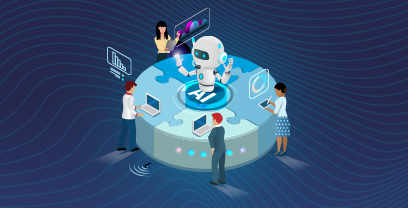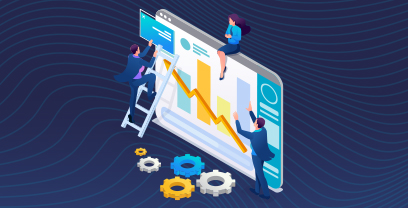In procurement and supply chain management, two processes often come to the forefront: Source-to-Pay (S2P) and Procure-to-Pay (P2P). Both processes are vital for optimizing procurement operations and spend, ensuring compliance, and achieving a smooth supply chain flow.
However, while the S2P and P2P processes are closely related, they are not the same. Understanding the distinctions between S2P and P2P is essential for any business looking to optimize its procurement operations.
In this blog, we’ll highlight the main differences between source-to-pay and procure-to-pay, individual roles in the procurement process, and how S2P and P2P software can improve your procurement operations.
What Is Source-to-Pay?
Source-to-Pay, also known as S2P, encompasses all the activities involved in sourcing goods and services, from determining internal needs and defining requirements, to identifying and evaluating potential suppliers based on a variety of criteria.
During sourcing, organizations solicit and evaluate proposals or bids from multiple suppliers, then negotiate contracts to formalize terms and conditions. During procurement, the supplier provides the goods and services and fulfills the order.
The S2P process culminates in accounts payable, where invoice processing, verification, and payment to the supplier occur. This stage demands accuracy and efficiency to ensure that payments are made correctly and on time, which is crucial for maintaining good supplier relationships and financial integrity.
8 Key steps in the S2P process:
| Needs Identification | Identifying and defining the requirements for goods or services |
| Sourcing | Performing market research and analysis to identify the best possible sources for the required goods or services |
| Supplier Evaluation and Selection | Evaluating potential suppliers based on various criteria such as price, quality, reliability, and compliance |
| Contract Authoring and Negotiation | Formalizing the terms of the supply arrangement, including pricing, delivery schedules, and other conditions |
| Procurement and Ordering | Creating and approving purchase orders, and ordering the goods or services from the supplier |
| Receiving and Inspection | Inspecting and verifying received goods against the purchase order and contract terms to ensure quality and compliance |
| Invoice Processing and Reconciliation | Processing and verifying supplier invoices, ensuring they align with the purchase orders and contract terms |
| Payment Processing | Approving and processing of payments to the supplier |
Throughout S2P, data is collected and managed for analysis, helping to optimize future sourcing decisions and procurement strategies. Various mechanisms must be implemented to ensure compliance with internal policies and external regulations, and manage risks associated with supply chain and procurement activities.
Effective S2P management helps to optimize spending, enhance supplier relationships, and improve overall procurement performance. Read this blog post to learn more about the S2P process.
What Is Procure-to-Pay?
Procure-to-Pay, also known as P2P is a specific part of the procurement process that deals with the ordering, purchasing, receiving, and paying for goods and services. It’s a subset of the broader S2P process and focuses on the latter half of the procurement cycle.
8 Key steps in the P2P process:
| Requisition | Creating a purchase requisition that includes details about the required items, quantity, and the purpose of the purchase |
| Receiving and Inspection | Inspecting and verifying received goods against the purchase order and contract terms to ensure quality and compliance |
| Approval | Reviewing and approving the request ensure it is legitimate and aligns with the company’s budget and needs |
| Purchase Order (PO) Creation | Creating and official document for the supplier that details the order specifics (i.e. quantities, descriptions, prices, and delivery dates) |
| Order Fulfillment | Supplier acknowledges the PO and delivers the goods or services |
| Invoice Processing and Reconciliation | Processing and verifying supplier invoices, ensuring they align with the purchase orders and contract terms |
| Payment Processing | Approving and processing of payments to the supplier |
| Record Keeping | Recording all documents and transaction details for accounting and auditing purposes |
The P2P process is critical for ensuring that procurement is carried out efficiently, cost-effectively, and in compliance with company policies and external regulations. It involves close coordination between procurement, finance, and the receiving departments. Read this blog post to learn more about the P2P process.
Key Differences between Source-to-Pay vs. Procure-to-Pay
People often conflate the Procure-to-Pay process with the Source-to-Pay process, mainly because they are closely related and have overlapping elements. Both processes deal with sourcing, purchasing, and paying for goods and services, but they differ in scope and focus.
P2P is more focused on the transactional phase of procurement, from the point where a specific need for a product or service is identified through payment to the supplier. S2P is more comprehensive, including the P2P process as well as additional strategic elements such as identifying potential suppliers, conducting market analysis, and managing overall supplier relationships.
Here are seven key differences between S2P vs P2P:
- Scope: S2P is an end-to-end process that includes everything from identifying needs to making payments, whereas P2P focuses more narrowly on the transactional aspects of procurement.
- Strategic vs. Operational Focus: S2P involves strategic activities like market analysis, supplier evaluation, and contract negotiation, while P2P is more operational, dealing with ordering, receiving, invoicing, and paying for goods and services.
- Supplier Relationship Management: S2P encompasses supplier relationship management, aiming to build long-term relationships with suppliers. P2P typically does not include managing long-term supplier relationships.
- Contract Management: S2P involves contract negotiation and management as a core component, while P2P begins after contracts are already in place.
- Market Analysis: Unlike P2P, S2P includes conducting market analysis to find and evaluate potential suppliers.
- Tool and Technology Use: S2P requires tools for market analysis, supplier evaluation, and contract management, whereas P2P utilizes procurement software, invoicing systems, and payment processing tools.
- Impact on Business Strategy: S2P has a direct impact on the overall business strategy, influencing how resources are sourced. P2P impacts the efficiency and effectiveness of the procurement function but has a less direct impact on broader business strategy.
Knowing Where to Begin: Full S2P or P2P
The fact is, even if you are focused on P2P, it is a best practice to consider the implications or future needs for the full S2P process. Some organizations may have huge inefficiencies within their P2P process causing them to lose savings and incur high process costs. For them, starting with P2P will make sense, however, it does not mean that their upstream process (Source-to-Contract) should be ignored.
The choice between a Source-to-Pay vs Procure-to-Pay hinges largely on organizational need and where in the transformation journey they are. Some choose to start with full S2P initiative, others that are happy with their S2C process will choose to focus on P2P. It’s critical to assess your organization’s specific goals to decide which approach aligns best with your procurement strategy and business objectives.
Ivalua’s S2P and P2P Software
Ivalua offers a comprehensive Source-to-Pay platform and Procure-to-Pay software that cater to a wide range of procurement needs in organizations:
- Ivalua’s S2P platform encompasses the entire spend and supplier cycle, digitizing the complete S2P process across all spend and suppliers. The solution is designed to offer strategic insights into procurement processes, empowering teams to generate more value for the business. By providing unparalleled visibility, collaboration, and adaptability to procurement and supply chain leaders, Ivalua’s Source-to-Pay software helps organizations manage their supplier relationships effectively, negotiate better contracts, and optimize overall spending. Watch our Source-to-Pay software demo.
- Ivalua’s P2P solution focuses on streamlining the transactional aspects of procurement by simplifying the processes of purchasing goods and services, and managing invoices and payments. It provides automated invoice processing, electronic purchase orders, and efficient payment processing to enable a smoother, faster procurement process. Watch our Procure-to-Pay software demo.
Both Ivalua’s S2P and P2P software solutions are known for their user-friendly interfaces and integration capabilities, and the ability to fit seamlessly into an organization’s existing IT infrastructure.
They enhance collaboration and transparency, ensuring that all stakeholders in the procurement process have immediate and secure access to the information and tools they need.
P2P or S2P, Ivalua Has You Covered
With Ivalua, organizations can streamline their operational procurement tasks with P2P software or embrace a more strategic, holistic approach with a comprehensive S2P platform. Both offerings are designed to enhance efficiency, ensure compliance, and provide valuable insights. At Ivalua, we’re committed to addressing the diverse procurement challenges faced by modern organizations.
Interested in learning more about how a Source-to-Pay platform can help your organization? Download Gartner’s Strategic Roadmap for Source-to-Pay Technology, which provides valuable insights into building a long-term plan that goes beyond the basics.




